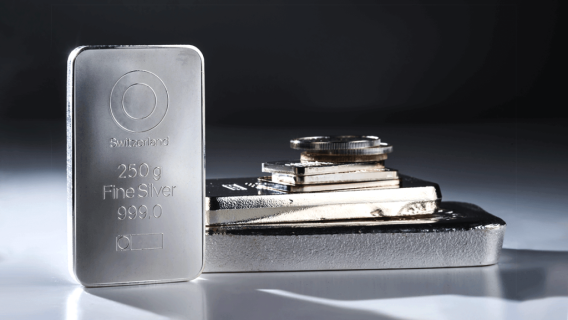After repeatedly disappointing expectations for a rate cut for much of this year, the Fed last week decided to cut rates by 50 basis points—the first such cut to its benchmark interest rate in four years. Investors celebrated the decision, pushing stocks higher and warmly welcoming the bank’s confirmation of the falling rate environment.
A commonly reported narrative behind the rate cut was that a slowing U.S. economy made the Fed’s decision all but inevitable. For instance, the rationale offered up by CNBC was that job gains had slowed while inflation “had made further progress toward [the Fed’s] 2% goal.”
But a slowing economy likely isn’t the real reason for the rate cut. Indeed, the Atlanta Fed’s GDPNow forecast for Q3 is for 3% growth, which is higher than where it was before the Fed’s July policy meeting.




Lost in the discussion was a more likely reason behind the rate cut, namely a massive series of debt payments coming due in the coming months.
According to some sources, up to $1 trillion in commercial real estate loans are expected to mature in 2025 (compared with about $950 billion this year), with S&P Global projecting a peak of $1.3 trillion for 2027. As S&P Global noted in a recent report, the Fed’s rate hikes of recent years contributed to the pressure in the commercial real estate (CRE) market, making rate cuts necessary. The financial analytics firm further observed:
“Should borrowers fail to seek the necessary refinancing and default on their loans, banks would not only face losses on their loans but valuations in the CRE market could come under significant pressure,” adding that a Fed rate cut “could offer some relief to borrowers.”
Meanwhile, a gargantuan $10 trillion in U.S. federal debt is coming due in 2024 and 2025 which needs to be refinanced, with the interest alone on the national debt expected to increase to $1.2 trillion this year, more than double what it was four years ago. As real estate expert Robert Campbell noted in a recent missive:
“When this maturing U.S. debt gets rolled over at higher interest rates, the money needed to service the U.S. debt is of course going to increase—and much of that added debt servicing costs are going to end up in the U.S. budget deficit.”
Campbell sees this leading to a “new era of persistent inflation” in the coming decade, but whether or not more inflation lies ahead, there’s no denying the debt problems our country is facing in the foreseeable future should bode well for gold and its “sister metal” silver, both of which tend to outperform during periods of great economic uncertainty—and both of which should also benefit from the falling rate environment (as income-oriented investors typically turn to non-yielding bullion when bond yields are declining).
With that in mind, let’s take a look at a standout turnaround-oriented play in the precious metals arena that we’ve recently examined in the Cabot Turnaround Letter.
A Silver Mining Stock to Capitalize on the Fed Rate Cuts
After a lagging performance for most of this summer, silver is finally starting to show signs of strength in sympathy with gold’s rally. Historically, some of the best gold price rallies are led or confirmed by corresponding strength in the white metal. With silver prices now on the rise, it’s time to give a closer look to some beaten-down silver mining stocks. And one such stock that has the potential to be worthwhile is Pan American Silver (PAAS).
Aside from the safe-haven attraction for silver, a key consideration here is that the “electrification of everything” trend is not only dramatically boosting electricity demand, but it’s also putting a tremendous strain on the electrical grid. The more recent buildout of AI data centers is further adding to this strain, as artificial intelligence requires up to 10 times more electricity than a typical Google search.
This is where Pan American comes in, as its main product, silver, plays a critical role here due to its excellent electrical conductivity (the highest of all metals), not to mention its widespread use in applications ranging from wind and solar energy production to electric vehicles and other industries associated with alternate energy.
Pan American is also one of the world’s biggest silver producers, as well as a miner of gold, zinc, lead and copper, with operations in several countries throughout North and South America. Management guided for silver production to expand in the coming months, as global demand for the precious metal strengthens. Specifically, company-wide silver production is expected to increase by more than 15% in the second half of 2024, while gold production should come in at similar levels.
What’s more, the key metric of all-in sustaining costs for both gold and silver is expected to fall substantially in the second half of the year for Pan American—including a decline to $1,525 for gold and a drop below $13 per ounce for silver—setting up the potential for margins to soar going forward, prompting a major bank to recently single out Pan America as a top pick for investors wanting some silver exposure (a reason for the stock’s strength). Analysts see the bottom line booming nearly 400% this year and over 130% in 2025. All told, it’s an intriguing mid-cycle turnaround stock.







